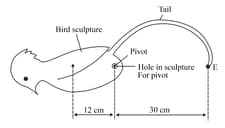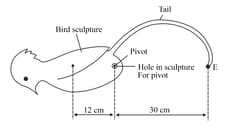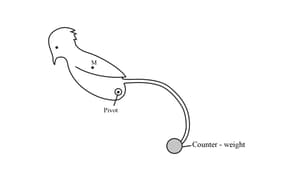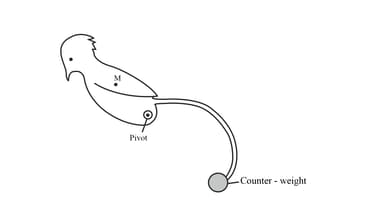David Sang Solutions for Chapter: Turning Effects of Forces, Exercise 4: End-of-chapter questions
David Sang Physics Solutions for Exercise - David Sang Solutions for Chapter: Turning Effects of Forces, Exercise 4: End-of-chapter questions
Attempt the free practice questions on Chapter 4: Turning Effects of Forces, Exercise 4: End-of-chapter questions with hints and solutions to strengthen your understanding. Cambridge IGCSE® Physics Coursebook Second Edition solutions are prepared by Experienced Embibe Experts.
Questions from David Sang Solutions for Chapter: Turning Effects of Forces, Exercise 4: End-of-chapter questions with Hints & Solutions
The diagram shows a uniform iron bar B of weight and length . The bar is being used to lift one edge of a concrete slab S . A stone, placed from one end of B, acts as a pivot.

A force of pushing down at the other end of B is just enough to lift the slab and hold it as shown.
State the distance d of the centre of the mass of bar B from the pivot.
The diagram shows a uniform iron bar B of weight and length . The bar is being used to lift one edge of a concrete slab S. A stone, placed from one end of B, acts as pivot. A force of pushing down at the other end of B is just enough to lift the slab and hold it as shown. Calculate the total clockwise moment, about the pivot, of the forces acting on bar B.
.png)
The diagram shows a uniform iron bar B of weight and length . The bar is being used to lift one edge of a concrete slab S . A stone, placed from one end of B, acts as pivot.
A force of pushing down at the other end of B is just enough to lift the slab and hold it as shown.
Calculate the downward force which slab S exerts on the end of bar B.
The diagram shows a uniform iron bar B of weight and length . The bar is being used to lift one edge of a concrete slab S. A stone, placed from one end of B, acts as a pivot.

A force of pushing down at the other end of B is just enough to lift the slab and hold it as shown.
Suggest a change to the arrangement in the diagram that would reduce the force required to lift the slab.
The diagram shows a mobile bird sculpture that has been created by an artist.

Where M is the centre of mass of the bird sculpture. Including its tail (but not including the counter-weight that will be added later). The mass of the bird and tail is . The bird sculpture is placed on a pivot. The artist adds the counter-weight at the end E of the tail so that the bird remains stationary in the position shown. Calculate the mass of the counter-weight.
The diagram shows a mobile bird sculpture that has been created by an artist.

M is the centre of mass of the bird sculpture. including its tail ( but not including the counter-weight that will be added later). The mass of the bird and tail is 1.5kg. The bird sculpture is placed on a pivot. The artist adds the counter-weight at the end E of the tail so that the bird remains stationary in the position shown. The center of mass of the sculpture with counter-weight is at the pivot. Calculate the upward force acting at the pivot.
The sculpture is rotated clockwise to the position shown in the diagram. It is held still, then carefully released.

State whether the sculpture will stay in that position, rotate further clock wise or rotate back anticlockwise.
The sculpture is rotated clockwise to the position shown in the diagram. It is held still, then carefully released.

State whether the sculpture will stay in that position, rotate further clock wise or rotate back anticlockwise. Explain you answer to the above condition.

